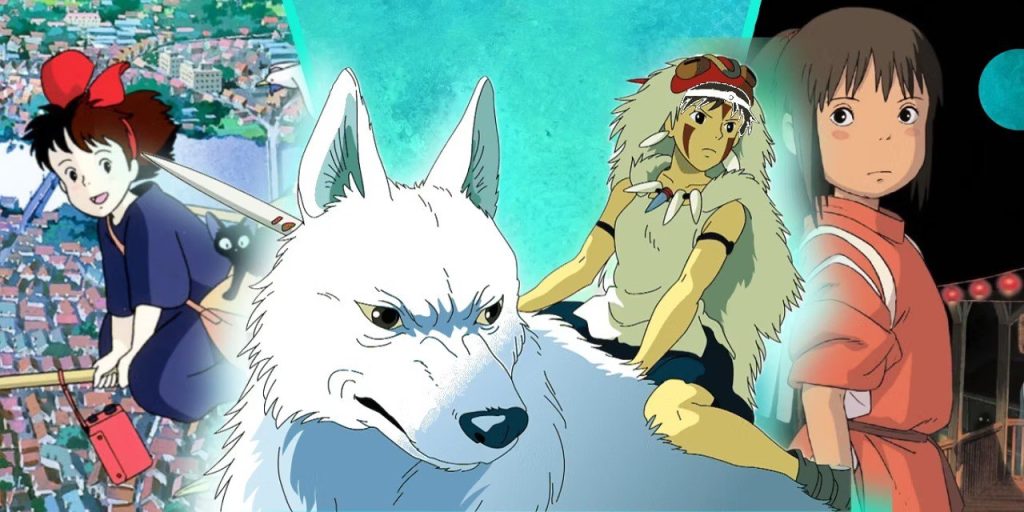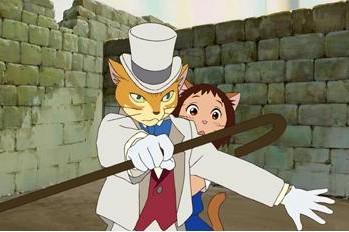Blog
5 of Ghibli Studio’s Most Popular Male Characters
Studio Ghibli, is a huge Japanese animation studio all well-known over the world for its magical worlds, attractive stories and most importantly, its concentration on strong and interesting female protagonists.
Those who are familiar with the ways of Studio Ghibli works can realize that the studio champions brave and intelligent female heroes which can distinguish its films from others. Apart from female characters, Studio Ghibli also creates male characters with unique, unparalleled, and exceptional personalities in their own right. Here are 5 of Ghibli Studi’s most popular male characters and their films. Hope it is useful for you!
- Howl Jenkins Pendragon in Howl’s Moving Castle
Howl is a powerful wizard who has a moving castle and is rumoured to steal the hearts of beautiful young women. Howl is not your typical protagonist – he is extremely vain, always dresses flamboyantly and may not appear to be as brave as a hero should be. Howl’s words and mannerisms may seem very whimsical but he shows a much more serious side when he transforms into a large bird-like creature in order to interfere with the ongoing war. Despite his appearances, Howl in reality is actually really endearing, gentle and intelligent. Not to mention, Howl’s weaknesses allow Sophie’s strengths to shine as we watch the two influence the other to become better versions of themselves.
- Baron Humbert von Gikkingen in The Cat Returns
Baron is actually an artisan cat statue dressed in a white suit and top hat. He only appears in real life when the sun sets as the owner of the Cat Bureau. Baron is a statue but the charisma he exudes is so captivating that we easily overlook that fact. The baron is a gentleman who is level-headed, gives great advice, and likes to make his own tea blend even if he can’t “guarantee the flavor.” In The Cat Returns, the female protagonist Haru saves the Cat Prince and she catches trouble when the cat kingdom wants her to be the Cat Prince’s bride in return for her kindness. With the help of Muta, Haru is introduced to the Baron who agrees to help her and sets out to rescue her when she is taken away to the cat kingdom. The Baron not only helps Haru to escape from the Cat Kingdom, but he also teaches her numerous important lessons on how to be brave and trust herself. With all his positive qualities, there is no reason to not be mesmerized by the charms of the Baron.
- Shun Kazama in From Up on Poppy Hill
Aired in the 1960s Yokohama, From Up on Poppy Hill shows us the story of the friendship between Umi Matsuzaki and Shun Kazama that later booms into a young romance. Our impression of Shun changes many times as he stops his different charms as a dreamy poem writer to a passionate young man who is in charge of protecting the students’ clubhouse from being demolished. Although Shun is only 17 years old, he is able to know the importance of history over the novelty of modernization and shows much resoluteness in pursuing the higher-ups level to not demolish the old clubhouse building. Shun’s antics initially feel a bad impression on Umi but as the two find a mutual understanding, he gets her support and help. Together, Shun and Umi tried to get the students to clean the clubhouse for the anti-demolition campaign and convince the authority to keep the clubhouses.
- Shō in The Secret World of Arrietty
At the beginning of the film, Sho appears to be a very weak boy, a sick boy due to low rate of his heart operation and lonely from the lack of parental attention. However, as the film progresses, Sho befriends Arrietty, the tiny borrower, and tells her about his true feelings. Since then, Sho always helps his friend to facilitate the little doll house. In this scene, the inherent difference between the worlds of Sho and Arrietty can be clearly understood as his kind gesture becomes extremely fearsome in the perspective of the tiny borrowers. The difference in the size of a human being and the borrower can’t stop their friendship from developing and Sho’s human size becomes essential when Arrietty seeks his help to save her mother from the housekeeper. At the end of the film, their friendship gives Sho the courage to face his sickness despite the low chances and to face his future with greater optimism.
- Seita Yokokawa in Grave of the Fireflies
The audiences have a chance to watch the 14-year-old Seita trying to guard and feed his younger sister during the war, they are overtaken by the kindness and compassion in humans and realize their weakness and selfishness in this reality. The story is told from Seita’s perspective, so the viewers not only empathize with his anger, pride and frustrations, but we also witness the close bond between the siblings which added more anguish to Setsuko’s eventual death. The real counterpart in this real world Seita, Akiyuki Nosaka, wrote this story as an expression of his guilt and regret over the loss of his sister (who died) during the time of World War 2. Although Nosaka survived the war, Seita’s death in the initial scene is a vital point in the film, shaping Nosaka’s own thoughts, feelings, and desires.
The male characters mentioned there are not heroes or perfectionists – they all have their flaws, weaknesses, and fears. Despite their imperfections, these male characters successfully expose themself to be brave and able to find confidence and strength. If the films of Ghibli Studio don’t include these male characters, I guess they will be sorely lacking and the female heroes would not be as splendid and bright as they can be.
Cre: https://ghibli.fandom.com/wiki/Category:Male_characters
https://en.wikipedia.org/wiki/Studio_Ghibli





